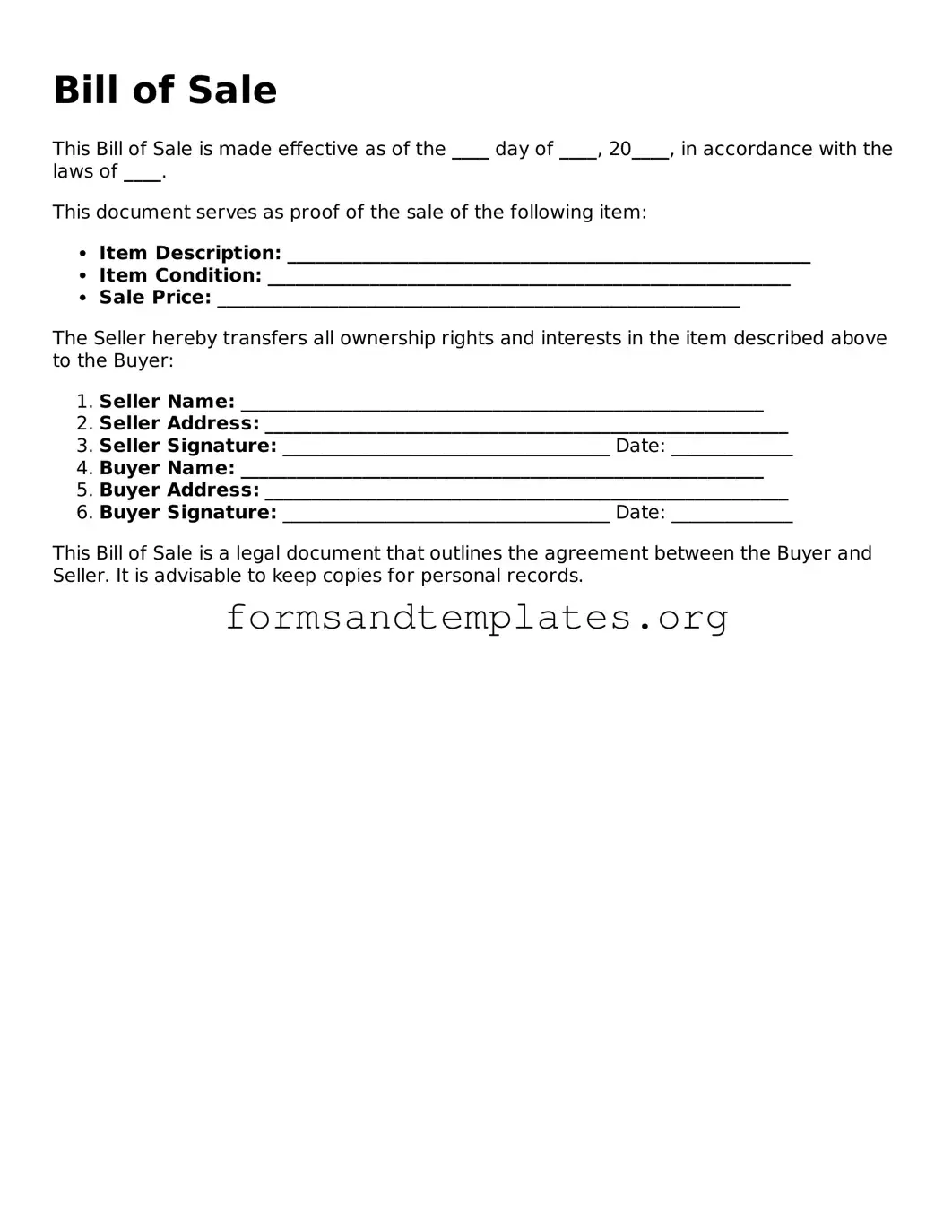What is a Bill of Sale?
A Bill of Sale is a legal document that serves as proof of the transfer of ownership of personal property from one party to another. It outlines the details of the transaction, including the buyer, seller, and a description of the item being sold. This document is crucial for both parties, as it provides evidence that the sale occurred and can help prevent disputes in the future.
When do I need a Bill of Sale?
You typically need a Bill of Sale when you are buying or selling personal property, such as vehicles, boats, or valuable items. It is especially important in transactions involving significant amounts of money or items that require registration, like cars. In some states, a Bill of Sale may also be required for tax purposes or to transfer ownership legally.
A comprehensive Bill of Sale should include the following information:
-
Names and addresses:
Full names and addresses of both the buyer and seller.
-
Description of the item:
A detailed description of the item being sold, including make, model, year, and any identifying numbers (like a VIN for vehicles).
-
Sale price:
The agreed-upon price for the item.
-
Date of sale:
The date the transaction takes place.
-
Signatures:
Signatures of both the buyer and seller to validate the agreement.
Is a Bill of Sale legally binding?
Yes, a Bill of Sale is legally binding as long as it includes all necessary information and is signed by both parties. It acts as a contract that can be enforced in a court of law. However, to strengthen its validity, it’s often recommended to have the document notarized, especially for high-value transactions.
Do I need to have my Bill of Sale notarized?
Notarization is not always required, but it is highly recommended, especially for significant transactions. Having the Bill of Sale notarized adds an extra layer of security and authenticity. It can also help in situations where proof of ownership or the transaction is questioned later on.
Can I create my own Bill of Sale?
Yes, you can create your own Bill of Sale. Many templates are available online, which can help you ensure that you include all necessary information. However, it is essential to ensure that the document meets your state’s legal requirements. Always double-check that the template you use is appropriate for the type of transaction you are conducting.
What happens if I lose my Bill of Sale?
If you lose your Bill of Sale, it can complicate matters, especially if there are disputes about ownership. However, you can often recreate the document if you have access to the original transaction details. It may also help to keep a copy of any correspondence related to the sale, such as emails or text messages, as these can serve as additional proof of the transaction.
You can obtain a Bill of Sale form from several sources:
-
Online templates:
Many websites offer free or paid templates that you can customize.
-
Office supply stores:
Some stores sell pre-printed Bill of Sale forms.
-
Legal professionals:
Consulting a lawyer can provide you with a tailored Bill of Sale that meets your specific needs.
